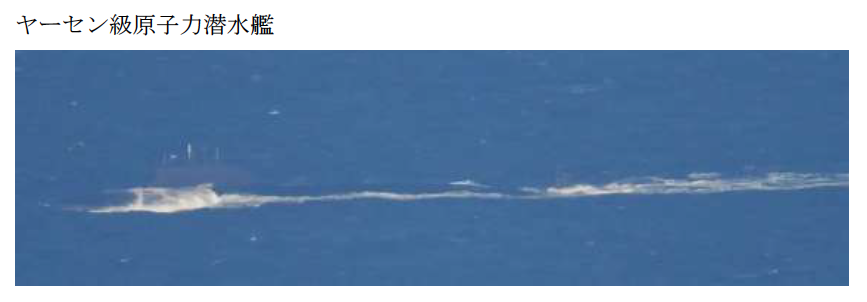Japan’s Maritime Self-Defense Force (JMSDF) has sighted a Russian Yasen-class nuclear-powered submarine near its waters, marking the first time Tokyo has observed this advanced Russian submarine.
The Japanese Defense Ministry announced the sighting on November 11, reporting that four Russian naval vessels, including the submarine, had navigated through the Soya Strait, which separates Japan’s northern island of Hokkaido from Russia’s Sakhalin.
The group of vessels comprised the destroyer RFS Marshal Shaposhnikov (543), the missile range instrumentation ship RFS Marshal Krylov (331), a rescue tug, and the Yasen-class submarine.
This Russian fleet was sighted approximately 49 miles northeast of Cape Soya on Hokkaido’s main island before sailing west through the La Perouse Strait.
The Japanese Defense Ministry said a JMSDF P-3C Orion Maritime Patrol Aircraft from Fleet Air Wing 2, stationed at Hachinohe Air Base on Honshu, Japan’s main island, shadowed the Russian flotilla.

The release emphasized that this was the first instance of a JMSDF sighting a Yasen-class submarine, underscoring the strategic significance of the event.
The Russian Pacific Fleet currently possesses two Yasen-class submarines, RFS Novosibirsk (K-573) and RFS Krasnoyarsk (K-571).
The Yasen-class nuclear-powered submarines are known for their sophisticated design, high level of stealth, and extensive armament, which allows them to execute land—and sea-based attacks.
The Yasen class was first commissioned in 2013. It has since garnered attention for its advanced features, including its ability to perform a variety of military roles, such as intelligence gathering and special missions, and its role as a cruise missile platform.
In June 2024, the rare deployment of the advanced Yasen-M class nuclear-powered cruise missile submarine ‘Kazan’ to Cuba highlighted Russia’s renewed interest in extending its operations across the broader region.
Military analysts have raised concerns about the Yasen-class submarines’ stealth and operational flexibility. US Air Force General Glen VanHerck, head of US Northern Command, described these submarines as comparable in quietness to their US Navy counterparts, noting that they pose a growing threat to American security.
The increasing presence of these advanced submarines in strategic waters like the Pacific and the Caribbean underscores the evolving dynamics of global naval power.
Growing Naval Presence Of The Russian Navy
Japan’s long-standing territorial dispute with Russia over the Kuril Islands, referred to as the Northern Territories in Japan, has strained relations between the two countries—especially since the Ukraine conflict began.
Now, growing military cooperation between Russia and China in Japan’s northern waters adds a new dimension to Japan’s security challenges.
Analysts warn that the Japan-US alliance may be unable to counter every emerging threat from China, North Korea, and Russia, particularly given the intensifying activity in these waters.
Russia’s Pacific Fleet has notably increased submarine operations in Japan’s northern waters, creating peacetime risks to critical underwater infrastructure, such as submarine cables.
According to Yu Koizumi, associate professor at the Research Center for Advanced Science and Technology at the University of Tokyo, Russian nuclear-powered ballistic missile submarines have intensified their patrols, with both frequency and duration rising over the past three years.
Koizumi noted that Russian nuclear-powered ballistic missile submarines have shifted to longer patrols since 2021. Between 2021 and 2022, these submarines conducted only one or two extended patrols of over a month, likely for nuclear deterrence, alongside several shorter trips.
However, 2023 saw no patrols exceeding a month, as during this time, the newer Borei-A class submarines stationed in Kamchatka were treated as “rookies.”
This year, however, Russian submarine activity has escalated further. Between January and September 2024, there were already three extended patrols exceeding a month, two of which surpassed two months, all conducted by Borei-A submarines.
Adding to Japan’s concerns, the latest sighting of a Russian Yasen-class nuclear-powered submarine marks a growing presence of advanced Russian submarines in the region.
Russia may also soon deploy the special-mission Belgorod submarine to Kamchatka. Koizumi suggested that this vessel, equipped with the Poseidon nuclear-powered underwater system, is likely tasked with mapping and potentially damaging critical underwater infrastructure, such as submarine cables, under the direction of the Russian Ministry of Defense’s Main Directorate of Deep Sea Research.
That being said, the growing submarine activity highlights the challenges Tokyo faces in securing its maritime borders amid growing military activity by both Russia and China in the northern seas.
- Contact the author at ashishmichel(at)gmail.com
- Follow EurAsian Times on Google News